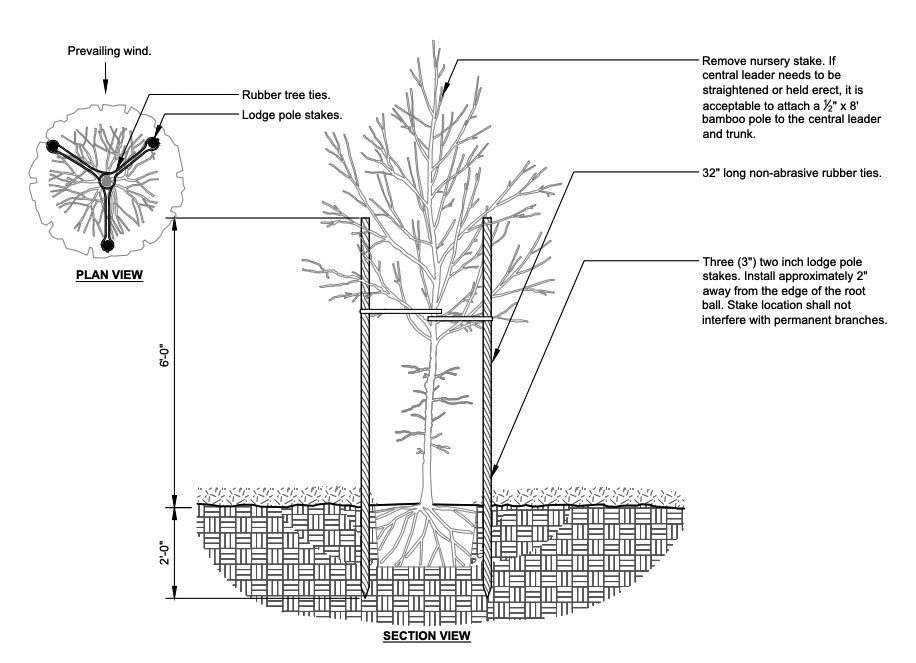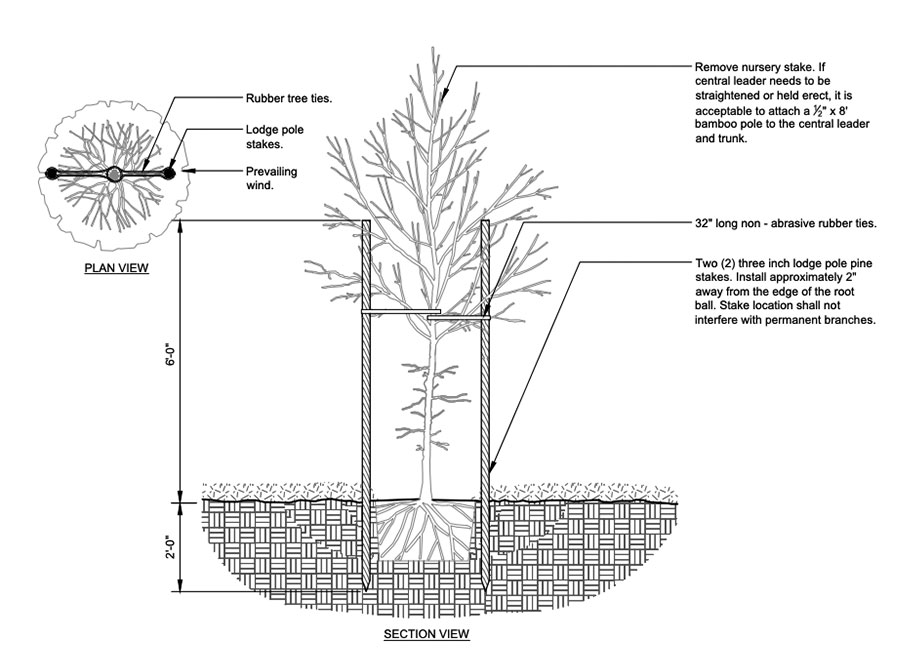Planning for delivery of your plants.
Use our photos and the size guides at the bottom of each plant page to get an idea of the size of the plant and container you should expect to be receiving.
We strongly recommend you consider the weight of the plants BEFORE you place your order to make sure you are prepared with the appropriate tools/equipment and help to move the plants around your yard. We do not install plants.
How to have the best soil for your plants.
You want loose, fertile soil that allows water to drain quickly. This helps plants establish themselves quickly and flourish throughout their lives.
Soil drainage is considered good if water does not sit on the surface for more than a few hours after a good watering. If you find your soil hard, clay-like, or slow draining, then you need to amend it.
To do this, start by breaking up tough clods with a shovel. Then, mix compost into the native soil before planting or into the backfill during planting.
You can purchase compost and other amendments to be delivered with your plants ›
First steps to planting fresh plants and trees.
Avoid planting in hot, dry, weather. If you’re planting in the summer, do it in the morning to avoid mid-day heat.
Remove the plant from the pot by tapping or hitting the sides and bottom to loosen the root ball from the container. This allows the plant to slide out. Loosen the root ball by slightly prying the roots apart by hand or using a shovel or pruners.
Dig your plant holes about twice as wide but just as deep as the root ball. Set the plant into the hole. If needed, take the plant out of the hole and refill with some soil to get the top of the root ball to be about 1 inch above the surrounding soil once planted.
Fill the hole with the rest of the soil around the plant, tamping lightly as you fill. Water well and gently around the plant. Make sure the root ball and surrounding soil are adequately moist.
How to plant a large tree that comes in a wooden box.
Working with a larger tree is a little bit more work to plant, but your reward is a more mature tree right from the start.
Dig the hole as deep as the root ball (use the shovel handle to measure and compare the depth of your hole with the tree box). TIP: If your soil is hard, soak the planting area the day before for about an hour. The next day the soil will be moist and soft.
Lay the tree on its side, next to the hole. Remove the bottom boards of the wooden box using a hammer. Put the box into the hole with the sides of the box still attached. Adjust the tree’s position in the hole as needed. Cut the bands off the box so the sides can be removed.
Backfill the hole halfway; add water to settle the soil and then fill with more soil. Use the extra soil to create a shallow berm around the edges of the root ball to keep the water from running off the root ball area.
Add a 2-3” layer of mulch when finished planting to help retain moisture in the soil. This helps prevent weeds from growing. Over time, the mulch will break down, adding organic matter to the soil. Do NOT pile mulch against the base of your tree or plants. Too much moisture held against the base from mulch can cause rot.
You can purchase bagged mulch to be delivered with your plants ›
Staking trees you just planted.
Any stake tied flush against the trunk of a plant when delivered should be removed shortly after planting. These types of stakes are used only for nursery production and could damage the tree if left on longer.
Small trees, less than six feet tall or less than once inch in diameter, don’t need to be staked.
After planting, watch the tree for a day or two. If it looks unstable, stake the tree with two or three tree stakes (lodge poles) and rubber ties.
The best way to water newly installed plants.
Plants need watering every day or every other day immediately after planting, depending on weather (plants need more water on hot or windy days). As the plant matures over the next few months, reduce watering to once or twice a week. Decrease watering further to once every two weeks or once a month if the plant has very low water needs.
Most water requirements are dependent upon climate and light exposure. Use the University of California WUCOLS website to search for more specific water requirements for your plants.
When watering, direct water flow to the plant’s root zone. Imagine where the plant’s roots are located laterally and depth-wise. Water enough so the water reaches the depth of the roots and water where the roots are located around the tree.
A general rule is: roots that uptake water will be along the edge of the plant canopy. So as your plants grow, adjust your watering away from the trunk to where the roots are growing, out along the canopy edge.
How to prune trees and shrubs properly.
Find and prune dead, damaged, diseased and rubbing branches. Most heavy pruning should be done in late winter, right before spring growth. Each cut should always be made about ¼ inch above an outward facing bud. This promotes a healthy, open canopy.
You can prune out a whole branch by pruning it at the main trunk or main branch.
Maintaining healthy plants throughout the year.
A general rule is simply to cut out any old, dead or dying parts to direct the plant’s energy on the healthy plant parts.
For flowers, cut out spent blooms throughout the growing season to keep plants tidy. Deadheading helps plants focus their energy on re-blooming. Some plants have attractive (to both humans and wildlife) seed heads you might consider leaving on the plants.
Ornamental deciduous grasses need to be cut back when new Winter/Spring growth is seen at the base of the plants. Cut the old growth back to just above the new growth.
Most evergreen grasses only need a cleanup by combing a glove-covered hand through the plant, pulling out the old growth a few times a year.
Recognizing normal plant behavior.
Most deciduous trees drop their leaves in fall and winter. However, some plants are summer deciduous. A shrub or tree that looks as though it’s dying could be summer deciduous. A quick search online will tell you whether your plant is summer deciduous.
Even evergreen plants lose their older leaves slowly over the year; they just don’t completely lose their leaves like deciduous plants will.
Spring and summer weather means faster growth. Warm temperatures combined with fresh plant buds can attract insect pests (aphids) or diseases (powdery mildew).
Most insects or diseases can easily be pruned away. Many times the plant will grow out of it, enlisting its natural defenses. If you’re concerned, take a sample of the pest and plant to a local plant professional. They can diagnose the issue and recommend treatment.
Fall and winter bring many changes in plants. Cold weather can cause frost damage on leaves, or cause them to turn yellow or purple. For frost-sensitive plants, cover them with frost cloth to prevent damage. In early spring, fertilize them to get rid of discoloration of leaves. Do not prune out frost damage on plants until early spring.


